What's New
Displaying results 4531 - 4540 of 4914
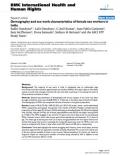
Resource | Publications,
The majority of sex work in India is clandestine due to unfavorable legal environment and discrimination against female sex workers (FSWs). We report data on who these women are and when they get involved with sex work that could assist in increasing the reach of HIV prevention activities for them.

Resource | Publications,
This study is the second round of the Integrated Bio-Behavioral Survey (IBBS) conducted among 500 female sex workers (FSWs), both street and establishment based, in the Kathmandu Valley. The IBBS was carried out during the months of January and March 2006. The survey measured HIV and syphilis prevalence among FSWs and variables which are associated with a risk of HIV infection, such as condom use, sexual behaviors, knowledge of HIV/AIDS, reported cases of sexually transmitted infections (STI), STI treatment behaviors, exposure to HIV/AIDS messages and drug habits.

Resource | Publications,
Tracking how much resources were spent on HIV/AIDS as well as forecasting resource needs for scaling up responses are important inputs for effective national and global responses to the AIDS pandemic. Efficient allocation of international financial assistance and national resources for HIV/AIDS should be guided by transparent information on sources and uses of funds. The lack of timely, accurate information about spending represents a key constraint for policy decision on effective use of limited resources in developing countries.
The needs to further improve data systems are clear. At present, there has been limited success in establishing resource tracking system and a comprehensive information regarding where those funds came from and how they were spent. As a result, policy makers are unlikely to be able to effectively mobilize additional resources and allocate them toward the populations and types of services that are vital to confront the HIV/AIDS epidemic.
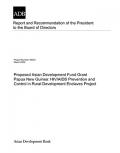
Resource | Publications,
The HIV/AIDS Prevention and Control in Rural Development Enclaves Project proposes to help strengthen government leadership and the implementation of strategies to contain the spread of HIV among rural populations.
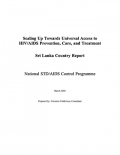
Resource | Publications,
Sri Lanka currently has an HIV prevalence rate of less than 0.1 percent. In order to maintain the low prevalence rate, Sri Lanka’s universal access priority will be in the area of prevention, though treatment and care will also be expanded. Sri Lanka also plans to conduct advocacy and campaigns to improve attitudes towards HIV and AIDS in the society and facilitate access to all services.
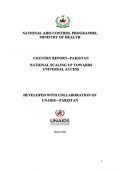
Resource | Publications,
The National AIDS Control Programme/Ministry of Health estimates, using WHO/UNAIDS Epi-forecast model, the number of HIV infected individuals in Pakistan at the end of 2005 as between 70-80, 000; this would amount to a prevalence of less than 0.1%. The reported cases to the NACP are still low, however, NACP, MoH estimates that there are 70,000 estimated HIV/AIDS cases in the country. A situation that highlights the important fact that there is a slow and gradual increase in the number of reported/diagnosed cases over the years.
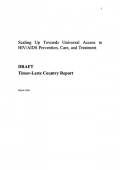
Resource | Publications,
It is believed that HIV prevalence in Timor-Leste is currently low. However HIV/AIDS has had a devastating impact on other countries in comparable circumstances to Timor-Leste. Among Timor-Leste’s nearest neighbors Papua New Guinea appears to be in the early stages of a generalized HIV epidemic which threatens to not only halt, but reverse the development achievements that nation has made in its relatively short history. Many of the circumstances that have led to the current HIV situation in Papua New Guinea are also present in Timor-Leste including large scale social dislocation and high levels of HIV related risk behaviors.
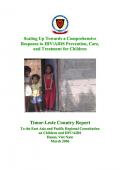
Resource | Publications,
Timor Leste is a country in the early stages of national development. As such it faces significant challenges common to all new nations as well as specific challenges resulting from its own unique history, culture and environment.

Resource | Publications,
The Cambodian HIV epidemic appears to have slightly decreased with a HIV prevalence among adults aged 15-49 that declined from 2.1% in 2002 to 1.9% in 2003. In 2003, 123,100 adults aged 15-49 years were estimated to be living with HIV/AIDS with women accounting for 47% of them. Of the total number of adult living with HIV/AIDS, 19,814 were estimated to have AIDS. These estimates, together with the rough estimates (NCHADS) of 12,000 children infected in 2003 with HIV will be updated.
In April 2004, a Workshop was organized by NCHADS to prepare the Annual Comprehensive Work Plan 2005, based upon the up-dated Strategic Plan, with provinces and NGO partners. Three MoH departments (Planning, TB and NMCHC) also participated. At this meeting Annual national and provincial targets were set. The result was the Annual Operational Comprehensive Plan 2005, which incorporated, for the first time, many of the inputs and expected outputs of partners working in coordination with PAOs in provinces. This Work plan was also firmly grounded within the Ministry of Health Annual Operational Plan 2005, prepared for the HSSP.
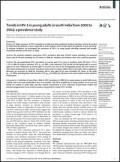
Resource | Publications,
Major increases in HIV-1 prevalence in India have been predicted. Incident infections need to be tracked to understand the epidemic’s course, especially in some southern states of India where the epidemic is more advanced. To estimate incidence, we investigated the prevalence of HIV-1 in young people attending antenatal and sexually transmitted infection (STI) clinics in India.
A reduction of more than a third in HIV-1 prevalence in 2000–04 in young women in south India seems realistic, and is not easily attributable to bias or to mortality. This fall is probably due to rising condom use by men and female sex workers in south India, and thus reduced transmission to wives. Expansion of peer-based condom and education programmes for sex workers remains a top priority to control HIV-1 in India.





